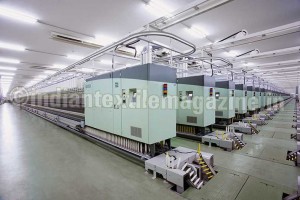Targets capacity of one million spindles in five years
 One of the leading providers of plastics and niche textile-related products in India, and with global footprints spanning nine countries, the Sintex Group has its strong presence in the US, European, American, African and Asian markets.
One of the leading providers of plastics and niche textile-related products in India, and with global footprints spanning nine countries, the Sintex Group has its strong presence in the US, European, American, African and Asian markets.
Sintex, which is primarily into manufacturing plastic products like water tanks and textiles, is setting up a spinning unit in Gujarat with three lakh spindles at a cost of Rs. 1,800 crores. This will be ramped up to one million spindles with a total capex of over Rs. 5,000 crores over the next five years.
Work on the new spinning plant has already begun. The company has the adequate management band, and the project team is in full execution mode. Identification of machines is already over, while negotiations with the concerned parties are in progress. Production is expected to commence from 2015-16. The unit will provide direct employment to 500 persons and indirect employment to 1,200 persons.
Sintex has carved a niche for itself in the value-added textile segment through manufacture of high-end yarn-dyed structured fabrics for men’s shirting, yarn-dyed corduroy, ultima cotton yarn-based corduroy and fabrics for women. This business is a value-driven, margin-accretive business that contributes only about 10 per cent to the company’s topline – its contribution to the company’s profitability is actually more pronounced.
The company’s textile business is largely export-oriented with a major portion of the output being sold overseas to global fashion labels. Its other customers are reputed male and female apparel brands in India.
The protracted economic slowdown in Europe adversely impacted the company exports. This was more than made up by increasing volumes in the domestic market and a significant increase in the ready-to-stitch fabrics. As a result, the company has managed to maintain turnover of Rs. 471.70 crores against Rs. 467.82 crores in 2011-12.
In 2013-14, utilisation picked up resulting in a growth of 16 per cent. An improvement in average realisation in selling price and addition of new boutique customers targeted during the year has improved the business prospects. Growing volumes and capacity utilisation offers further scope for improvement in margins.